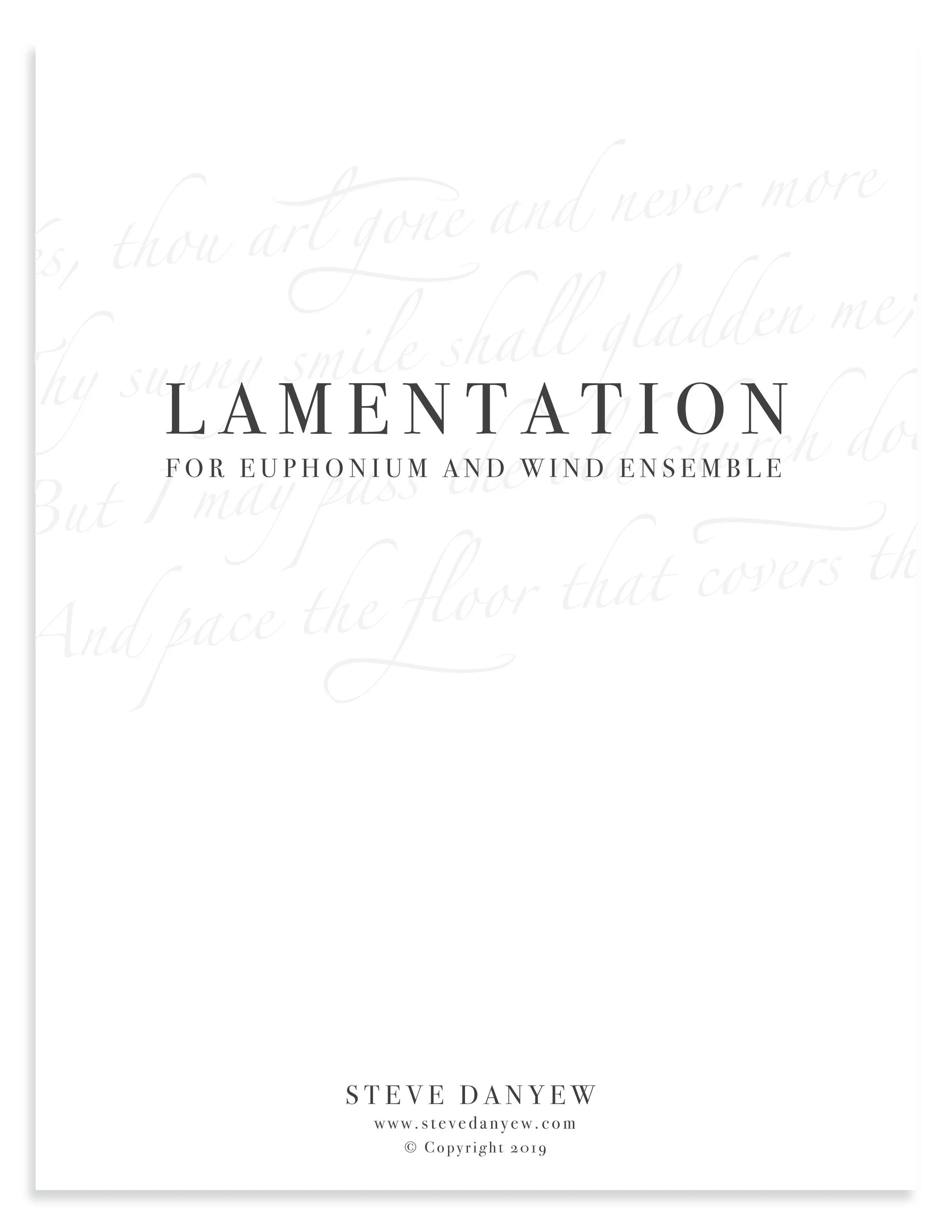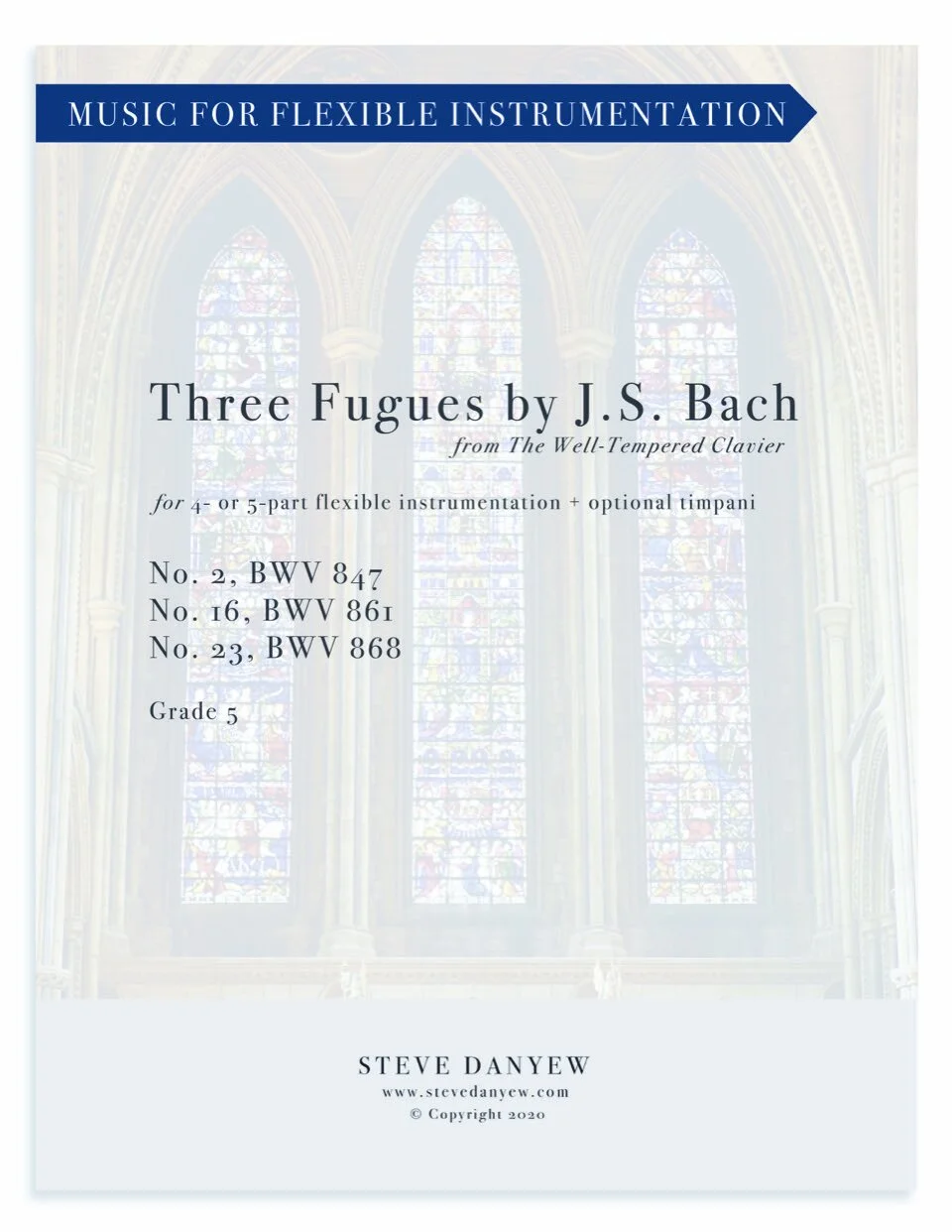Lamentation for Euphonium and Wind Ensemble
Lamentation for Euphonium and Wind Ensemble
Grade 5
Lamentation for Euphonium and Wind Ensemble is a reflective lament written in memory of euphoniumist Isaiah Ray.
Pricing
Printed Score Only: $35
Printed Score + Printed Parts: $199.99
Printed Score + Digital PDF Parts: $199.99
Printed Euphonium & Piano Reduction: $29
Details
Grade 5 – Solo Euphonium and Wind Ensemble
Year of Composition: 2019
Length: 8:30
Instrumentation:
Flute 1,2
Oboe
Bassoon
Clarinet in Bb 1,2,3
Bass Clarinet in Bb
Alto Saxophone in Eb 1,2
Tenor Saxophone in Bb
Baritone Saxophone in Eb
Off-Stage Solo Trumpet in Bb
Trumpet in Bb 1,2,3
Horn in F 1,2,3,4
Trombone 1,2,3
Euphonium
Tuba
Solo Euphonium
Double Bass
Harp (optional*)
Piano
Timpani
Percussion 1: Vibraphone
Percussion 2: Marimba (5-octave), Tam-Tam
Percussion 3: Glockenspiel
Percussion 4: Crotales, Suspended Cymbal
Percussion 5: Bass Drum
**The piece can be performed without harp, though the harp adds a great deal of color to the piece so it is strongly encouraged.
Program Note
Lamentation for Euphonium and Wind Ensemble was commissioned in 2019 by World-Wide Concurrent Premieres and Commissioning Fund, Inc. It will be premiered in February 2020 by the Sam Houston State University Wind Ensemble, with Irving Ray as euphonium soloist.
The work was commissioned in memory of Sam Houston State University alumnus Isaiah Ray, a euphoniumist who passed away tragically in 2006, shortly after graduating with his B.M. in Music. Isaiah’s younger brother Irving, also an accomplished euphoniumist, earned a D.M.A and won a position with the US Army Band “Perishing’s Own.” It’s a tragic and yet triumphant story.
We all know what it’s like to remember someone we’ve lost. We wonder if they are out there somewhere looking down on us. Sometimes we remember them with sadness; other times, with hope and joy.
When writing the piece, I thought of the euphonium soloist as the narrator of these memories. The first motive presented by the soloist depicts the phrase, “Isaiah, are you there? Where did you go?” A brief conversation ensues between Irving (euphonium) and his brother Isaiah (solo trumpet).
This musical motive (and the underlying questions, “Isaiah, are you there? Where did you go?”) forms the basis for much of the work. Throughout the piece, the narrator recalls memories of Isaiah accompanied by a range of emotions: joy, sadness, confusion, acceptance. The solo trumpet (Isaiah) introduces music that is more hopeful and uplifting, and as the work progresses, the euphonium soloist begins to adopt more of Isaiah’s music.
The piece builds to a climax, incorporating an original chorale tune. There’s a sense of triumph as well as grief. Toward the end of the piece, the ethereal material from the opening returns, with statements of “Isaiah.” As unsettled as the final chord may be, we are left with a feeling of transcendence and hope.


















Grade 5
Magnolia Star is a sparkling, energetic piece for wind band (Grade 5) based on the blues scale and inspired by the American railroad.